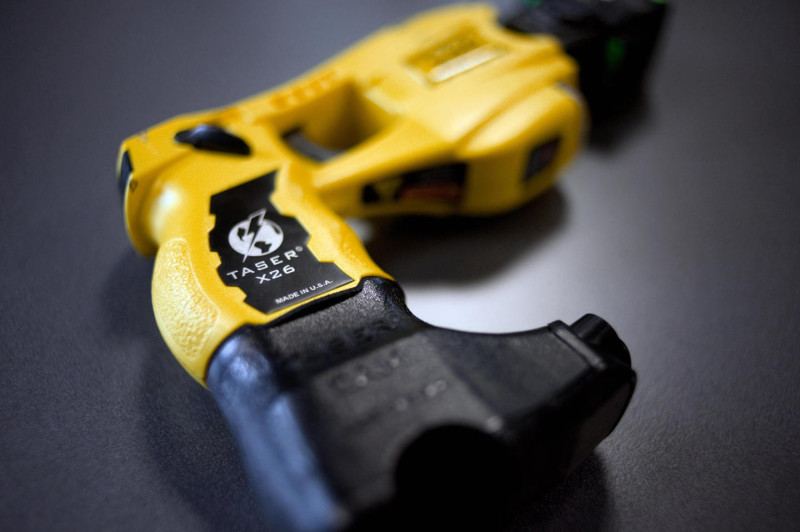As Cavallaro attempted to verify Hesterberg's identity, which he initially lied about, Hesterberg announced that he had received his warning and planned to leave. Cavallaro told him he was not allowed to leave, which led to an argument.
From the opinion:
Hesterberg again announced his intention to leave. In response, Cavallaro drew her taser, pointed it at the center of Hesterberg’s chest, and ordered him to put his hands behind his back. Hesterberg did not put his hands behind his back and instead asked her sarcastically and in disbelief, “What, you’re going to tase me now?” Hesterberg also told Cavallaro something close to, “Don’t tase me, I have a heart condition.” Cavallaro responded, “Well, then turn around and put your hands behind your back.” Hesterberg again did not put his hands behind his back. ... Hesterberg turned to his right and began a slow jog south on the trail and got two to three strides into his jog when Cavallaro fired her taser in dart mode, striking Hesterberg in the back and buttock. Cavallaro did not give any verbal warning just before tasing Hesterberg, though she did order him to stop. Cavallaro announced over the radio, “Taser deployed! Taser deployed!” Besides eliciting a cry of agony, the taser incapacitated Hesterberg, causing him to fall face first on the trail’s degraded asphalt. Hesterberg testified that on a scale of one to ten, the pain from the taser was a ten. Hesterberg hoped that he would not die.
Cavallaro cited Hesterberg with failure to obey a lawful order, providing false information and walking a dog off-leash, but the San Mateo district attorney did not pursue any of the charges. Hesterburg filed a federal lawsuit alleging battery and negligence.
Judge Jacqueline Scott Corley weighed several circumstances that could justify use of force, including the severity of the crime from which Hesterberg was attempting to flee, any immediate threat to safety posed by Hesterberg, whether he was actively or passively resisting Cavallaro, whether the ranger gave a warning about the imminent use of force, the availability of less-intrusive alternatives to make the arrest, each party's culpability in escalating the incident, and Hesterberg's statement that he had a heart condition.
Corley gave no weight to testimony from the National Park Service's deputy chief of law enforcement, Hunter Bailey, because his "testimony at trial revealed a startling lack of awareness of the law and its application to use of force scenarios." Specifically, Bailey said he was unaware of 9th Circuit Court of Appeals holdings on the legal standard for the use of a Taser, according to the opinion.
The National Park Service is reviewing the opinion and has no comment at this time, according to an emailed response from spokeswoman Alexandra Picavet. She confirmed that Cavallaro is still a ranger and was found by the Department of the Interior to have "acted within agency policy and her training."
"Tasers can kill," Michael Haddad, one of Hesterberg's attorney's, wrote in a statement. "They should never be used against a non-threatening person as the ranger did here."
Read Magistrate Judge Jacqueline Scott Corley's opinion below:

